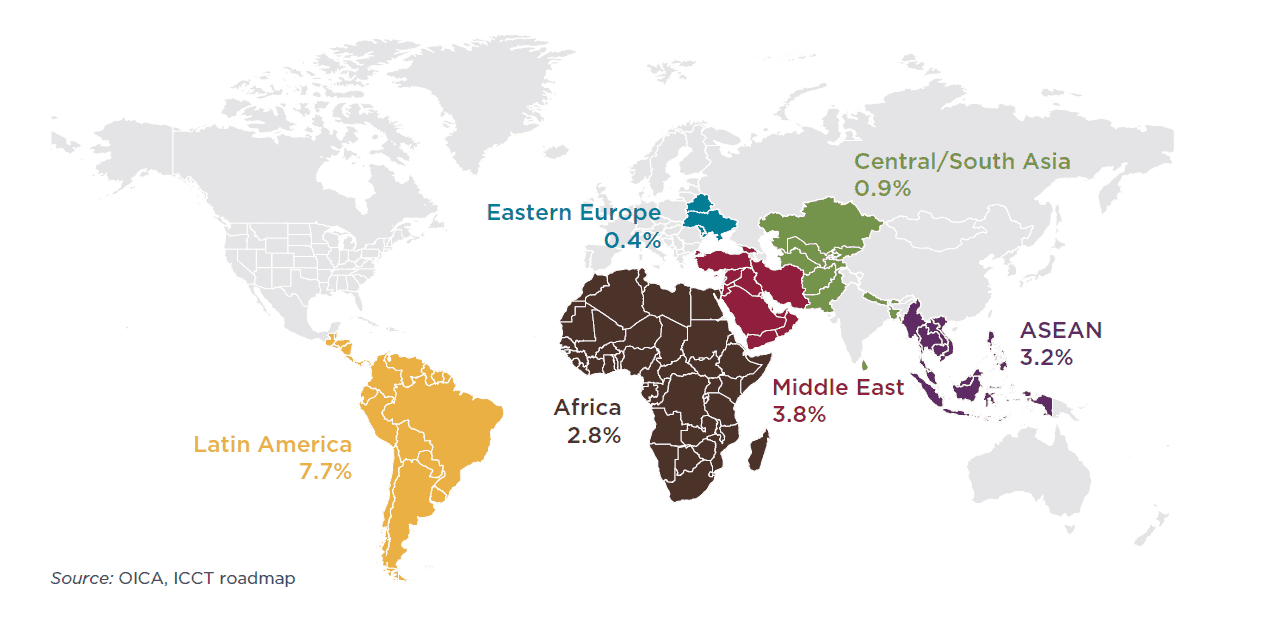Decarbonizing road transport by 2050: Accelerating the global transition to zero-emission vehicles
White paper
A critical review of ZEV deployment in emerging markets
Promotion of zero-emission vehicle (ZEV) technologies is a key global strategy for decarbonizing the transport sector and helping to achieve long-term climate goals. ZEV sales are increasing rapidly in the world’s leading passenger vehicle markets, including China and many of the countries represented in the ZEV Transition Council (ZEVTC). However, ZEV uptake has been much slower in emerging markets and developing economies (EMDEs) including low- and middle-income countries. Without additional ZEV policies beyond baseline year 2020, well-to-wheel CO2 emissions are projected to double in 2050 over the 2020 level, compared to a 5% increase for the ZEVTC countries and China combined. However, with significant ZEV uptake, CO2 emissions in EMDEs could fall 51% below 2020 levels by 2050. Therefore, to reach the climate goal of limiting global warming to less than 2 degrees Celsius, acceleration of the transition to ZEVs is needed in EMDEs as well as in leading ZEV countries.
Many of the ZEVTC governments are well-positioned to support a ZEV transition in EMDEs and have committed to accelerating the global ZEV transition. In this paper, we make specific recommendations regarding how ZEVTC governments can contribute to a ZEV transition in EMDEs. To arrive at these recommendations, we review and evaluate the status of ZEV uptake and ZEV policies in EMDEs; identify policy gaps and barriers, and strategies for leapfrogging to electrification; and quantify the existing and required level of international financial support to promote early phases of ZEV uptake in EMDEs. We have included in our analyses 117 non-ZEVTC countries from four key EMDE regions: Africa, Latin America, Eurasia (selected countries in Eastern Europe, Middle East, and South and Central Asia), and ASEAN nations.
Our analysis leads to several conclusions:
- Several emerging markets are leading EV deployment in certain vehicle segments including buses and two- and three-wheelers.
- Absence of phase-out targets and regulations are major ZEV policy gaps in emerging markets.
- Some emerging markets are using major policy levers to drive ZEV uptake.
- Policies for early ZEV uptake in emerging markets are driven by electrification of dominant transport modes.
- The ZEV transition in emerging markets is challenging and requires strategic policy interventions to overcome challenges.
- Emerging markets need significantly greater international financial support than the existing level for ZEV transition.
We also make several recommendations for the ZEVTC governments regarding how they can support the transition in the emerging markets, summarized as follows:
- Set clear targets to fully transition to ZEV sales in the 2030 to 2040 timeframe to bring down technology cost and increase global availability and affordability.
- Support the creation of ZEV-dedicated financing facilities via existing and new programs and initiatives to provide effective financial assistance to EMDEs and act to shift investments in ZEVs abroad.
- Establish a working group on the global ZEV transition as an enduring forum to engage with non-ZEVTC countries, especially EMDEs, and form regional collaborations to reduce disparities in the ZEV transition.

Figure. EMDE regional shares of the global vehicle market
